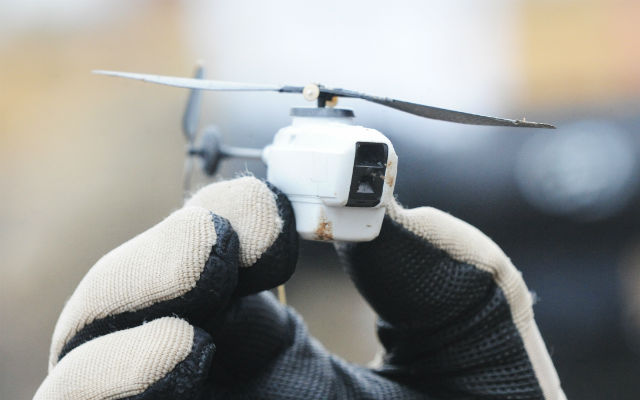The UK’s Military Aviation Authority is preparing the release of an updated version of its regulations on unmanned air vehicles, which will draw on feedback from a first document that was released last January.
Following the UK's drawdown from Afghanistan – a theatre in which UAVs were operated in segregated military airspace and often procured under urgent operational requirement deals – the Ministry of Defence saw a requirement for future operations to allow for remotely-piloted air systems (RPAS) to be flown in non-segregated airspace. It introduced the new specific regulations as a result.
“We saw that there would be a proliferation of RPAS in the military sphere,” an MAA representative told a Royal Navy conference in September. “There was a requirement for regulations to cover RPAS-specific issues.”
The UK’s Military Aviation Authority (MAA) is preparing the release of an updated version of its regulations on unmanned air vehicles, which will draw on feedback from a first document that was released in January of last year.
Following the UK's drawdown from Afghanistan – a theatre in which unmanned air vehicles (UAVs) were operated in segregated military airspace and often procured under urgent operational requirement deals – the Ministry of Defence saw a requirement for future operations to allow for remotely-piloted air systems (RPAS) to be flown in non-segregated airspace. It introduced the new specific regulations as a result.
“We saw that there would be a proliferation of RPAS in the military sphere,” an MAA representative told a Royal Navy conference in September. “There was a requirement for regulations to cover RPAS-specific issues.”
The MAA replicated the UK Civil Aviation Authority in mandating that the safety of the systems and the safe way in which they are flown as the most important factors, the representative notes. However, if aircraft are to be flown by the military, they need to be certificated accordingly, and CAA clearance is not enough.
The first document, Regulatory Article (RA) 1600, used weight as the discriminator between different UAV classes.
The MAA has acknowledged that these regulations are not necessarily proportionate, so it could start integrating some of the CAA’s approach to UAV regulations, which considers the way in which such equipment will be operated. For example, if the aircraft will be flown within line of sight of the operator, the rules could be more lenient.
Identifying that changes have to be made, the MAA is now preparing a second version of the ruling. This is currently at the draft stage, and is expected to be released in January 2016. The new RA may also allow for more acceptance of commercial certifications as evidence of a system’s safety.

The Black Hornet
Crown Copyright
The current regulations split UAVs into three classes, with class I covering small systems, with this class further splitting into four weight divisions.
Class I covers aircraft from the British Army's Prox Technologies Black Hornet nano UAV up to 150kg (330lb) systems, while classes II and III cover aircraft that are considered to have manned-aircraft equivalence.
“Even in its current state, it does offer significant relief from the previous MRP [MAA regulatory publication] for small RPAS,” the MAA notes. “But it’s only the first step.”
Source: FlightGlobal.com






















